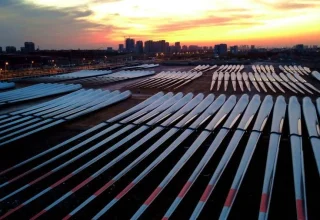
Air pollution across Punjab has soared to alarming levels, with readings indicating a sharp deterioration across major urban centres. On Saturday, the latest data placed Sheikhupura at an AQI of 257, the highest among the province’s cities. Faisalabad registered 253, while Lahore recorded 241.
Other cities included Gojranwala at 208, Dera Ghazi Khan at 167, Sargodha at 151, Bahawalpur at 143, Sialkot at 139, Multan at 132 and Rawalpindi at 110.
According to air quality guidelines, an AQI above 200 is considered very unhealthy, while values above 150 fall in the unhealthy range for the general population.
Within Lahore, several neighbourhoods displayed even higher readings. Safari Park recorded an AQI of 339, Barki Road 322, Multan Road 298 and Shahdara 220. On GT Road, the AQI was 213, Kahna No 207, Punjab University 199 and DHA Phase 6 recorded 187, all significantly exceeding safe limits.
Officials attribute the spike to cross border winds carrying pollutants from eastern Punjab in India, including smoke from the burning of crop residue. This has increased PM2.5 and PM10 particulate levels in Lahore and central Punjab. Meteorological and smog monitoring systems forecast an AQI of 220 to 240 in the next 24 hours due to wind patterns pushing pollutants towards Lahore.
Experts say the severity of pollution this season highlights long standing issues including industrial emissions, construction dust, vehicle exhaust and regional agricultural burning. Without urgent interventions, the public health impact such as respiratory and cardiovascular diseases may intensify.
Public health advisories have been issued, urging residents, especially vulnerable groups, to avoid prolonged outdoor exposure, use protective masks, keep windows closed and use air filtration where possible.
Government departments and local authorities are facing mounting pressure to implement emergency clean air measures, enforce emission standards, restrict the burning of crop residues, enhance public transport systems and expand air monitoring networks.
Unless winds shift or strong mitigation strategies are put in place, pollution levels are expected to remain dangerously high. Experts call for a coordinated approach including stricter industrial controls, reduction in vehicle emissions and regional cooperation with neighbouring Indian states to address transboundary haze.
As winter approaches, when atmospheric inversion traps pollutants close to the surface, major cities in Punjab may experience persistent smog and further declines in air quality.































